Most of us remember the grinning Cheshire cat in Lewis Carroll’s Alice in Wonderland, but while some cats look like they are smiling, they don’t in fact smile to show they are happy.
What does it mean when a cat looks like he or she is smiling? If cats can’t smile, how do we know if a cat is happy and content?
Facial features

Some cats have a mouth that curves upwards, which gives the impression of a smile. The British Shorthair (pictured above) has a smiley face which is interesting because the Cheshire Cat is based on a British Shorthair.
In contrast, Grumpy Cat (real name Tardar Sauce) earned fame because of her downward pointing mouth, which gave the impression she was grumpy, by all accounts, she was a sweet and affectionate cat.
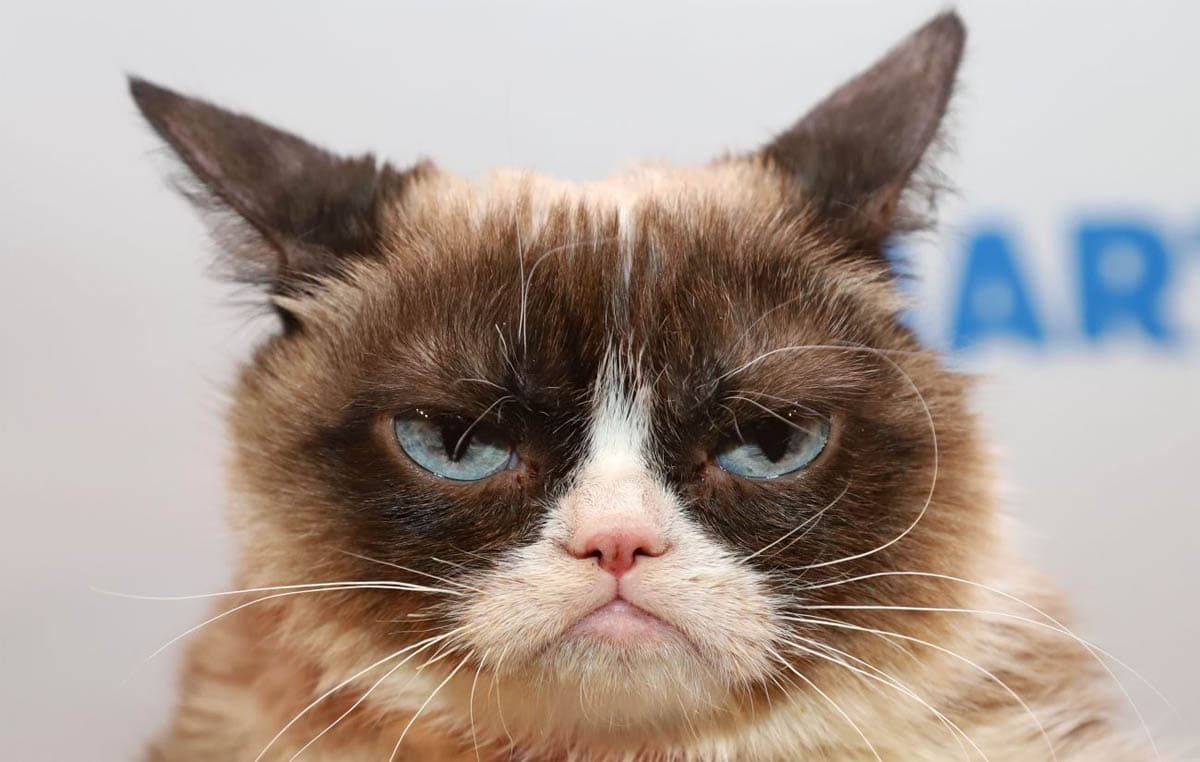
Flehmen response
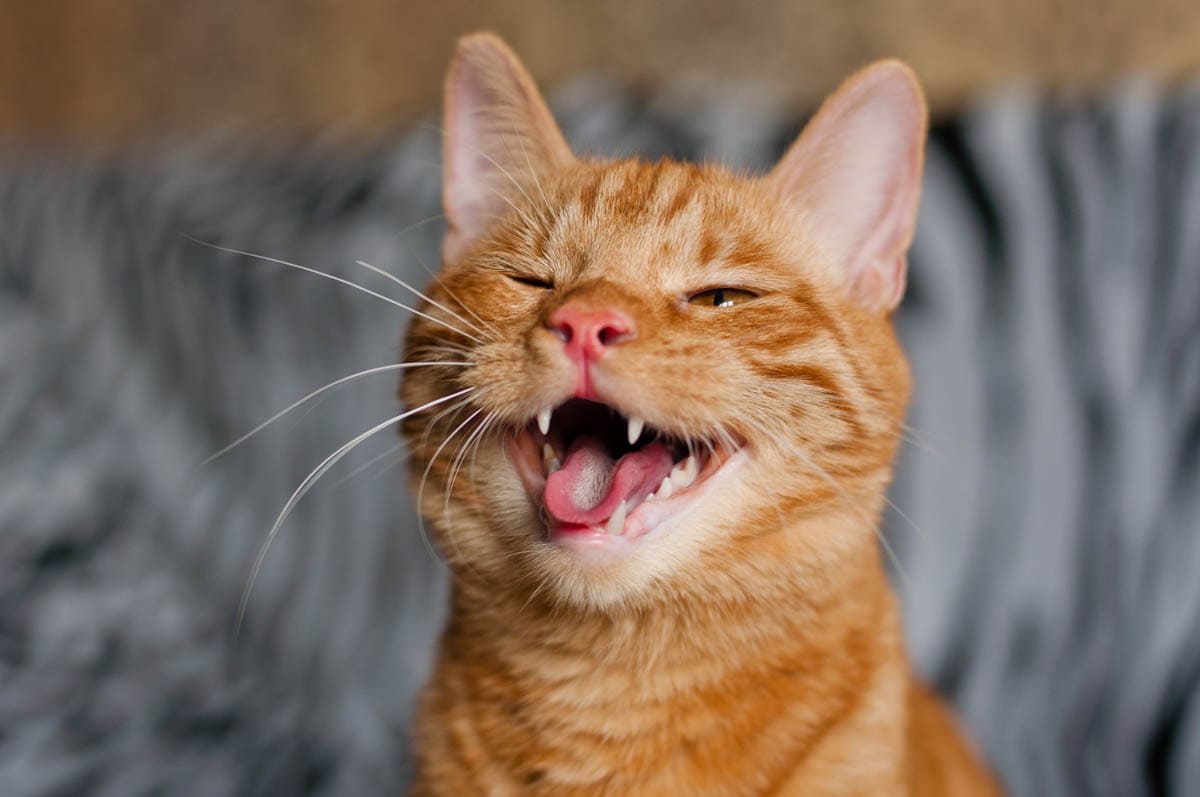
The flehmen response is a biological mechanism used by several animals, including cats, to investigate scents. Pheromone-rich odours, particularly those associated with cats can trigger the flehmen response. The cat curls the upper lips in what appears to be a sneer, in doing so, it opens two small ducts (nasopalatine canals) on the roof of the cat’s mouth behind the incisors which join up with the Jacobson’s organ. The Jacobson’s organ is a secondary olfactory system that plays an important role in the perception of certain pheromones and scents.
Panting
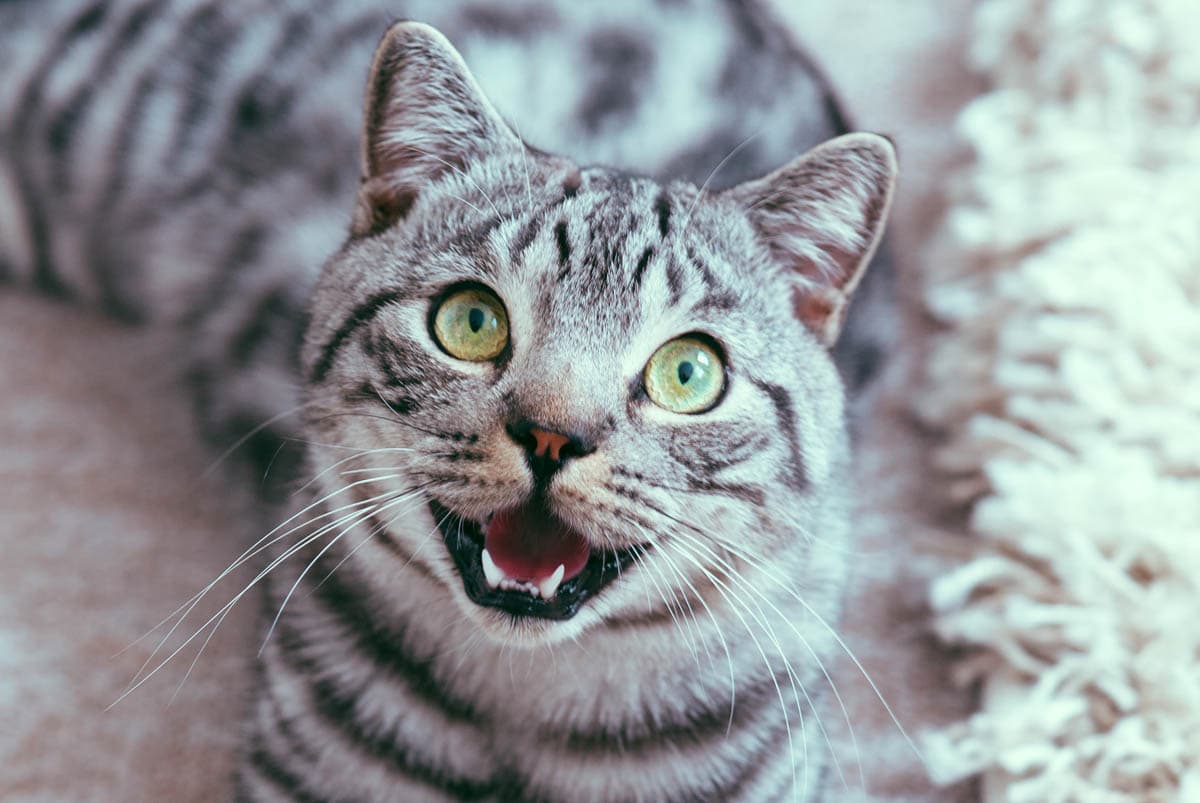
Panting is open-mouthed, rapid breathing; it is much more commonly seen in dogs than cats. Some cats are more prone to panting than others. In some circumstances, panting can be normal, but it may also be a sign of an underlying problem.
Panting after exercise or play can be normal, increased activity (during exercise) requires more oxygen, which your cat obtains by breathing more rapidly (just as we do when we have been running) and helps to lower the cat’s body temperature.
Pain
Cats are masters at hiding pain, but give off subtle cues. Recent research has looked at the facial expression of cats who are in pain. One indicator of pain is a grimace, with the lips closed and pulled back, which could be confused for a smile.
Other signs include head down position, pulled back whiskers, squinting, tense body, hunched up, aggression and avoids being petted.
If cats don’t smile, what are the signs that they are happy?
While cats don’t smile to show they are happy there are many other ways he does show his feelings with his body language.
Upright tail

The cat’s tail communicates a lot to other cats as well as humans about how he is feeling. An upright tail that is relaxed and slightly curved at the tip is a sign the cat is happy and content.
Purring

Purring is one of the most obvious signs that a cat is happy, and will often accompany head butting (below). Although associated with a happy and contented cat, cats can purr when they are in pain, giving birth and even when they are dying. It is thought that purring may comfort the cat during times of stress or pain.
Headbutting
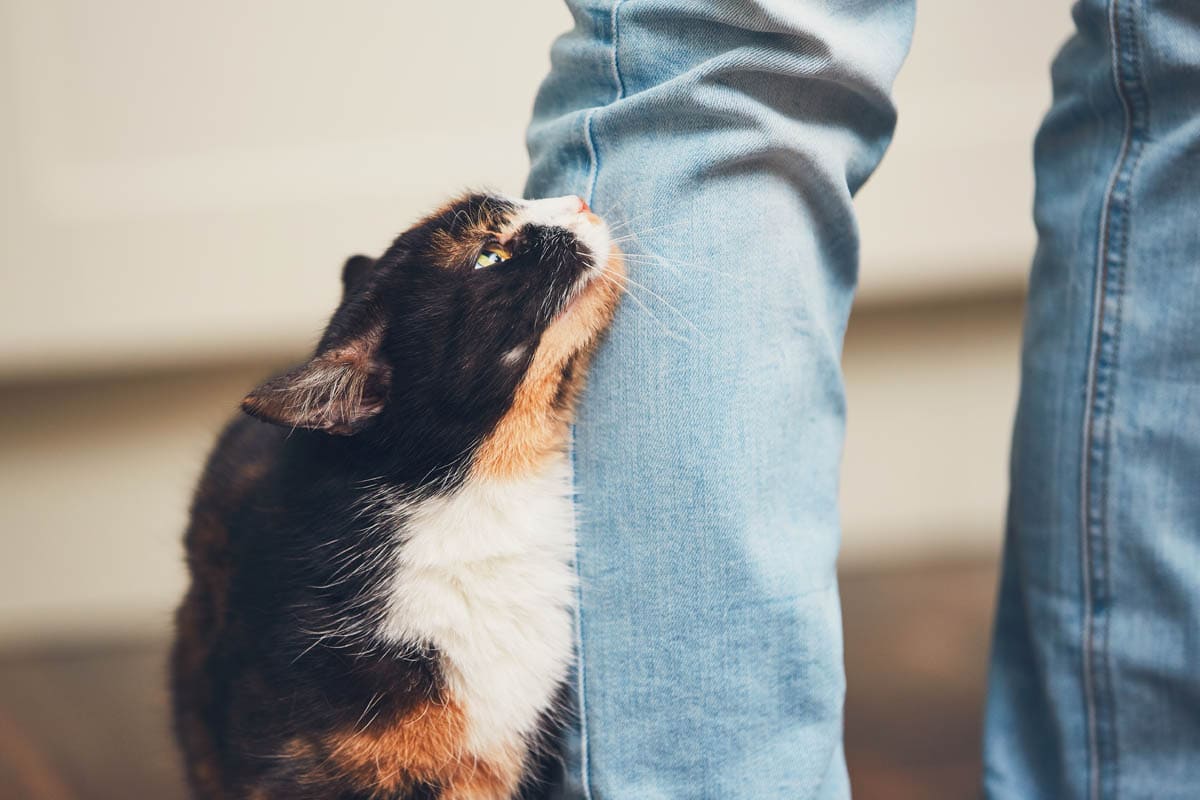
A cat who rubs its head or tail on a person is the ultimate compliment. These locations contain scent glands, which transfer pheromones when they rub to mark you as their own. You are a part of their kin.
Slow blinking
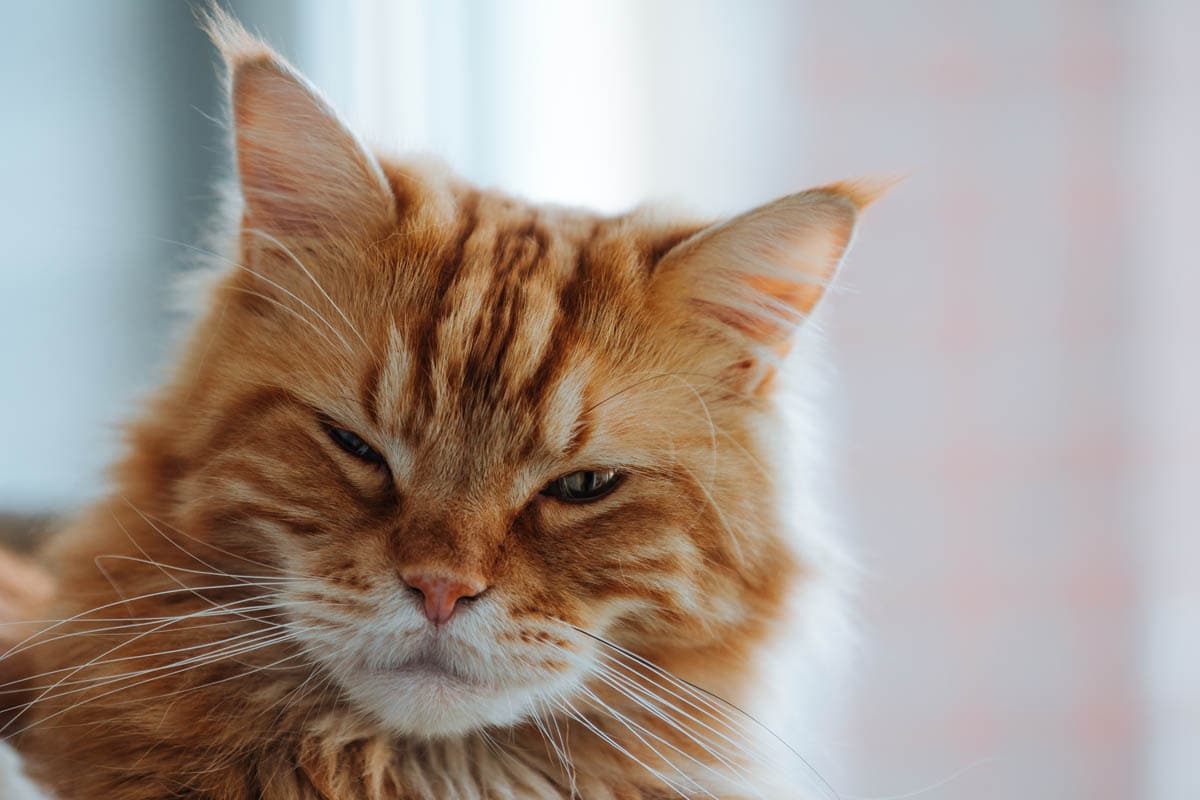
Cats view a direct stare as intimidating, particularly from strangers or dominant animals. This explains why cats are sometimes attracted to non-cat-lovers, as people who don’t make eye contact with a cat are seen as less of a threat.
The slow blink is reserved for people the cat trusts and loves. It is a sign that the cat is comfortable and content. If your cat gives you a slow blink, return the compliment with a slow blink yourself.
Kneading
Kneading is a throwback to kittenhood when kittens knead on their mother’s belly when they nurse. Some cats continue to knead into adulthood and may knead on blankets or their chosen human. It is often accompanied by slow, loud purring, drooling and partly closed eyes. Kneading is one of the most recognised signs that a cat is happy.
Relaxed posture
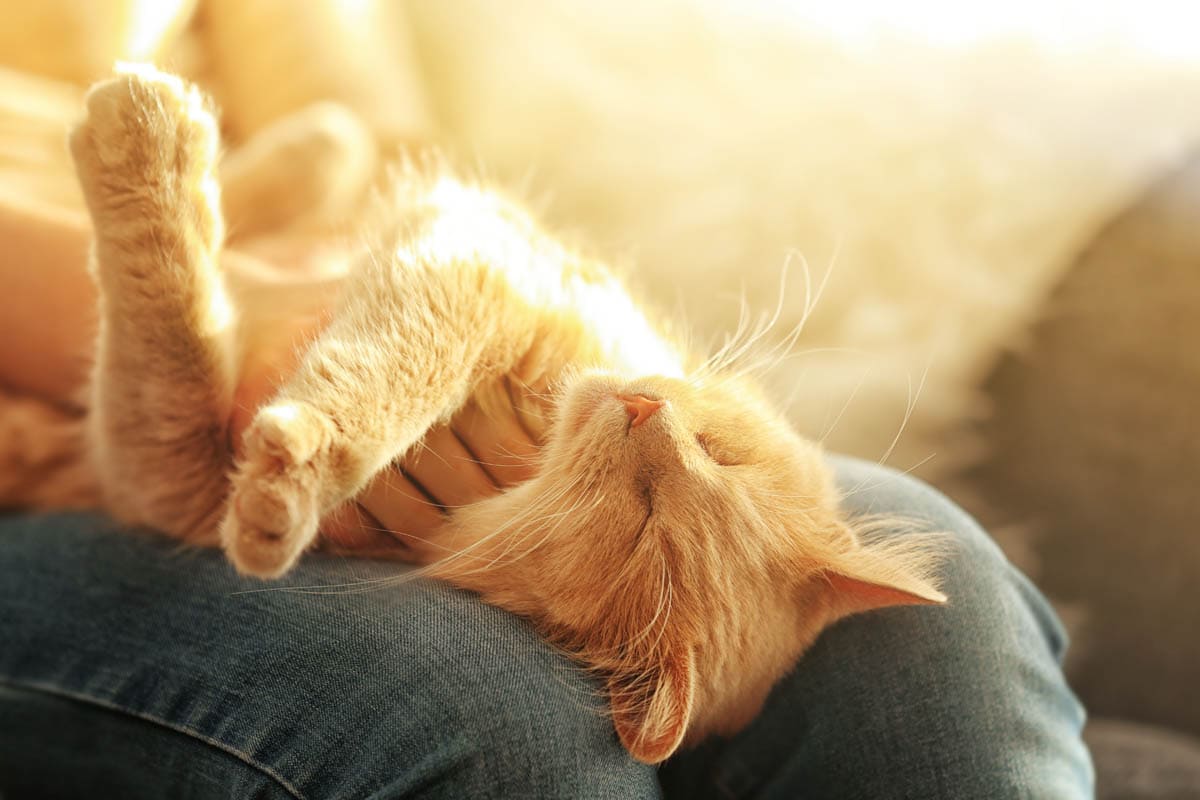
A picture is worth a thousand words and this photo perfectly demonstrates a happy and content cat. The eyes are relaxed and closed, the whiskers and ears are forward and the cat is lying on his or her back, and allowing the belly to be stroked, which is a sign of trust.

